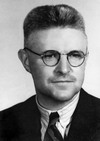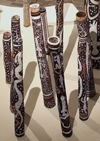
'In every respect new'
European impressions of the thylacine, 1808–1855
by Carol Freeman
When Tasmania was settled by the British 200 years ago, the thylacine, a shy marsupial carnivore with a striped back and a coughing bark, existed in small numbers on the island. By 1936 the species was extinct. This article focuses on the first published image of the thylacine in the Transactions of the Linnean Society in 1808, and traces its history over the following decades.
read the article
print version (pdf, 638kb)
about the author
____________________________________________________

Imagining a collection
Creating Australia's records of war
by Anne-Marie Condé
This paper examines three groups of First World War archival records held by the Australian War Memorial. The first group had an immediate and lasting impact on the understanding of Australia and the war. The second was largely unused until the late 1960s, when it became central to the work of historians exploring new historical approaches. The potential of the last group is only now being realised. In tracing the circumstances of their history, acquisition and use (or non-use) as archives, this paper contributes to an enlivened discussion of the creation, continued care and use of museum, library and archives collections.

Educational exsiccatae
Ferdinand von Mueller's botanical lessons in colonial Victoria
by Sara Maroske
In 1872, Ferdinand von Mueller, Victoria's illustrious Government Botanist and director of the Melbourne Botanic Garden, seized a moment when the Victorian government was intensely interested in education, to put a proposal regarding his own specialty of botany. This paper explores his troubled relationship with government, and the extraordinary lengths he went to, in his efforts to place three fascicles in about 50 institutions not previously seen as repositories of this kind of material.
read the article
print version (pdf, 300kb)
about the author
______________________________________________

Life and art?
Relocating Aboriginal art and culture in the museum
by Angela Philp
The concept of Indigeneity has, over time, become an important marker of Australian cultural identity, distinguishing specifically Australian characteristics and traditions from those of other nations. Using the National Museum of Australia and the National Gallery of Australia as case studies, this paper tracks the shifts in the relationships of these institutions with Aboriginal art, culture and histories.
____________________________________________________
Meeting the challenges of the future?
Museums and the public good
by Kylie Message
This paper analyses the 'ideas', 'philosophies', 'contexts' and 'companions' of several recent museum studies anthologies, and examines whether they respond to key issues facing museums today: how effectively these anthologies represent social inclusion and diversity discourses, how they account for outreach programs that aim to link museums and communities, and how they engage with the more general work, experience, and critical analysis of museums and museum contexts globally.
